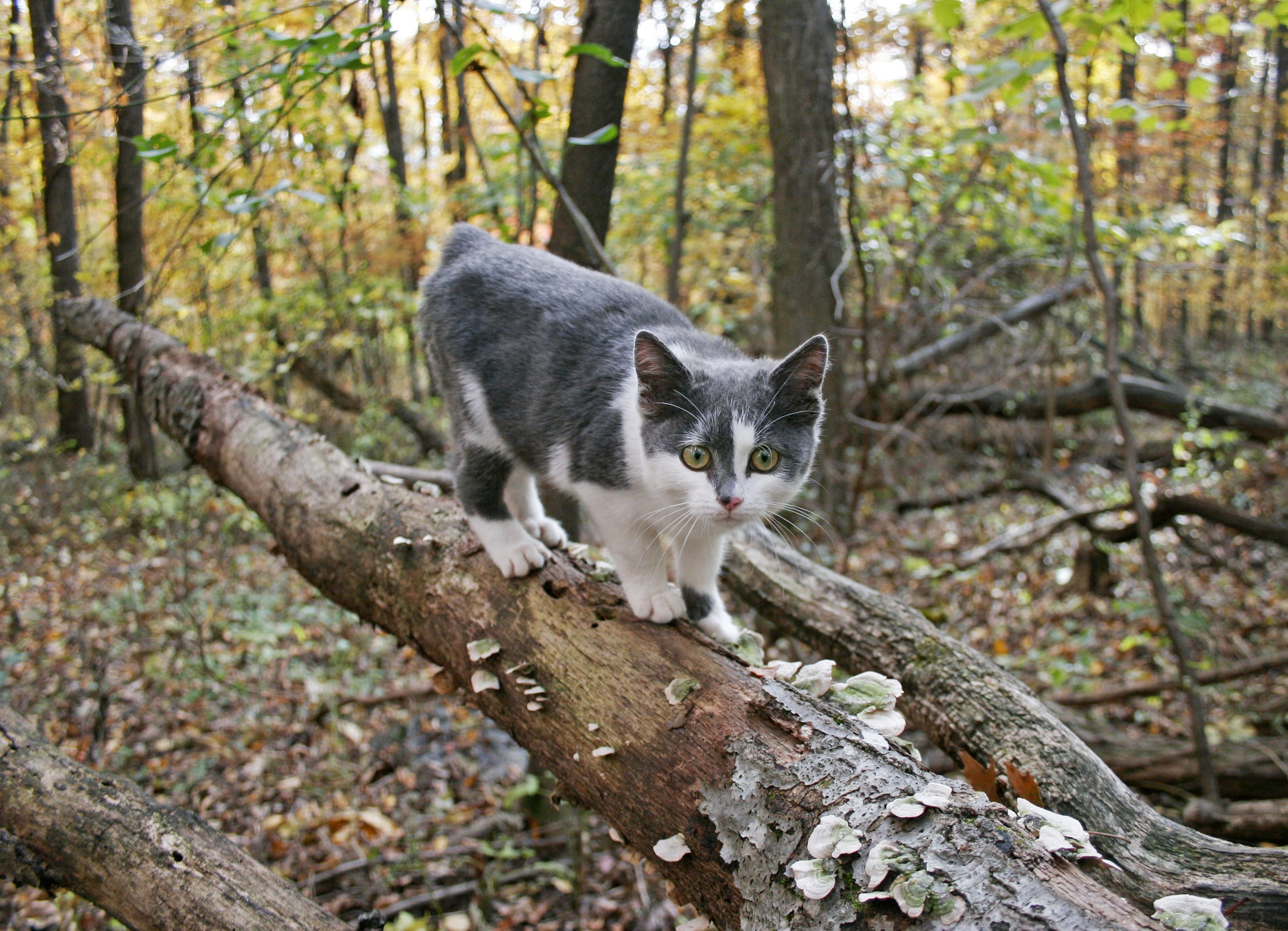
Feral cats fend for themselves in the wild.
Story and photos by Holly Marcus, contributor
Bundled in a heavy coat, a woman sits in a picnic shelter at Hillandale Park. Five large, healthy cats dine on plates of cat food scattered around her. She and several other caretakers come twice a day to feed these “homeless” cats, as she calls them. She doesn’t want to be identified; she’s been hassled over the years for doing this.
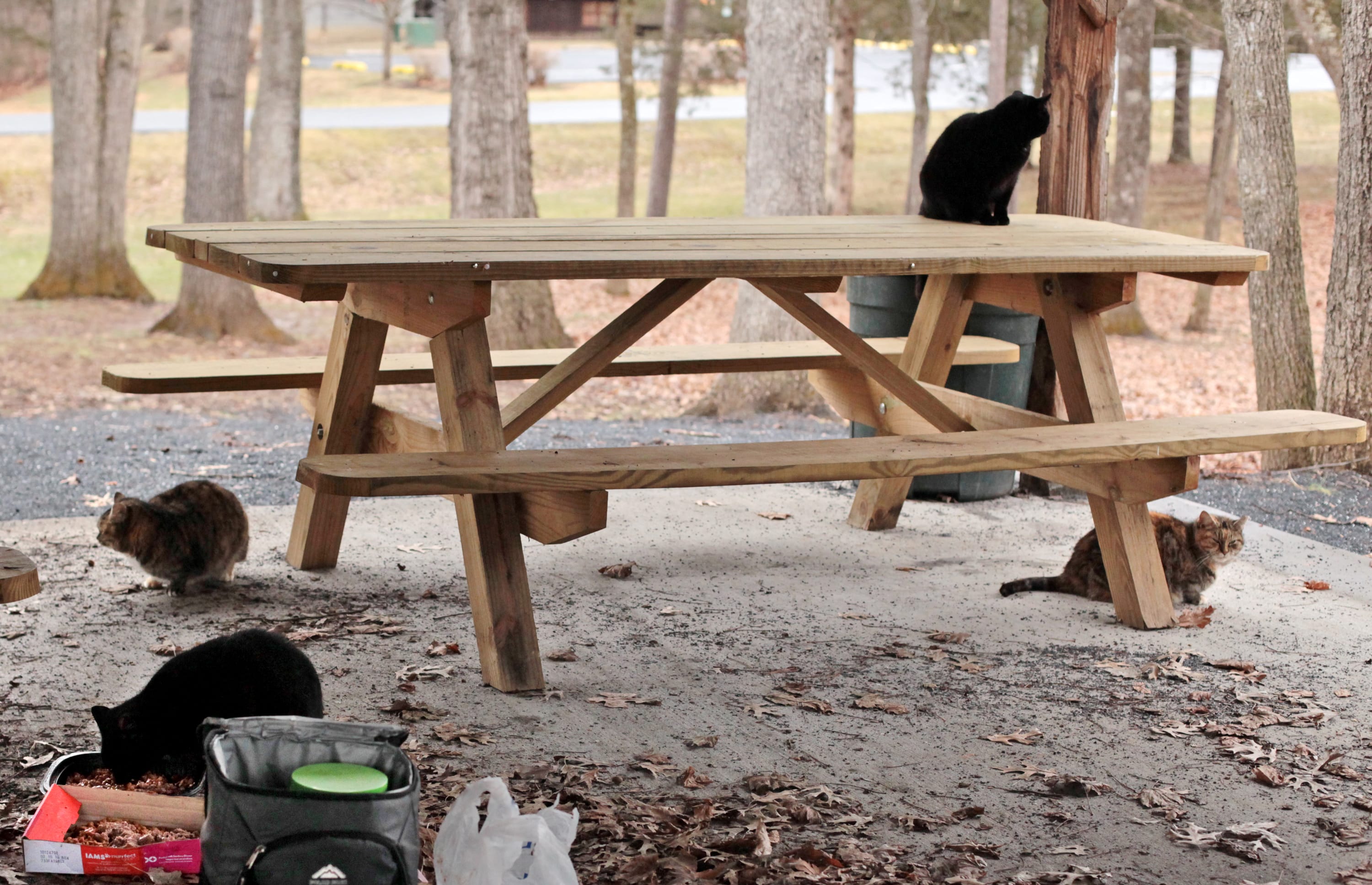
Hillandale Park is home to a small colony of cats who are ownerless and homeless. Like other feral cats, these cats fend for themselves in the park, although this colony is looked after by a group of caretakers who bring food and water.
“They aren’t feral,” the woman says. “I can pet them and pick them up, but they are skittish around strangers.” The cats keep a watchful eye out for approaching danger, scuttling off to the nearby woods to wait until the coast is clear.
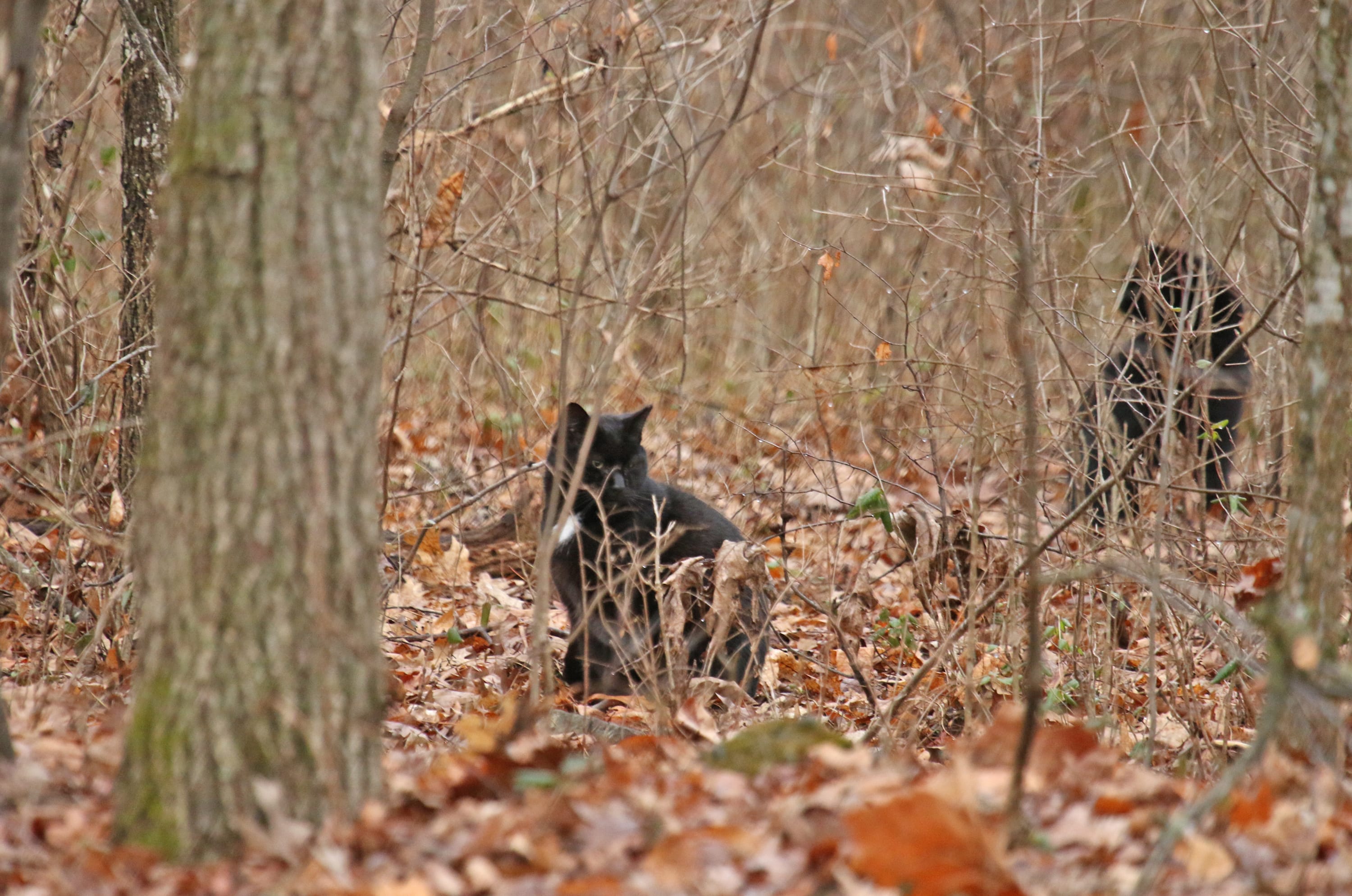
Feral cats avoid human contact. This colony of cats at Hillandale Park hide in the woods as people walk their dogs and jog along the trail in the park.
Some terminology: A “feral” cat has no owner, avoids human contact and fends for itself in the world – often seeking shelter in buildings, rummaging through garbage cans, and even eating food set out by concerned animal lovers. In contrast, a “stray” is a pet that has been lost or abandoned and still seeks human companionship.
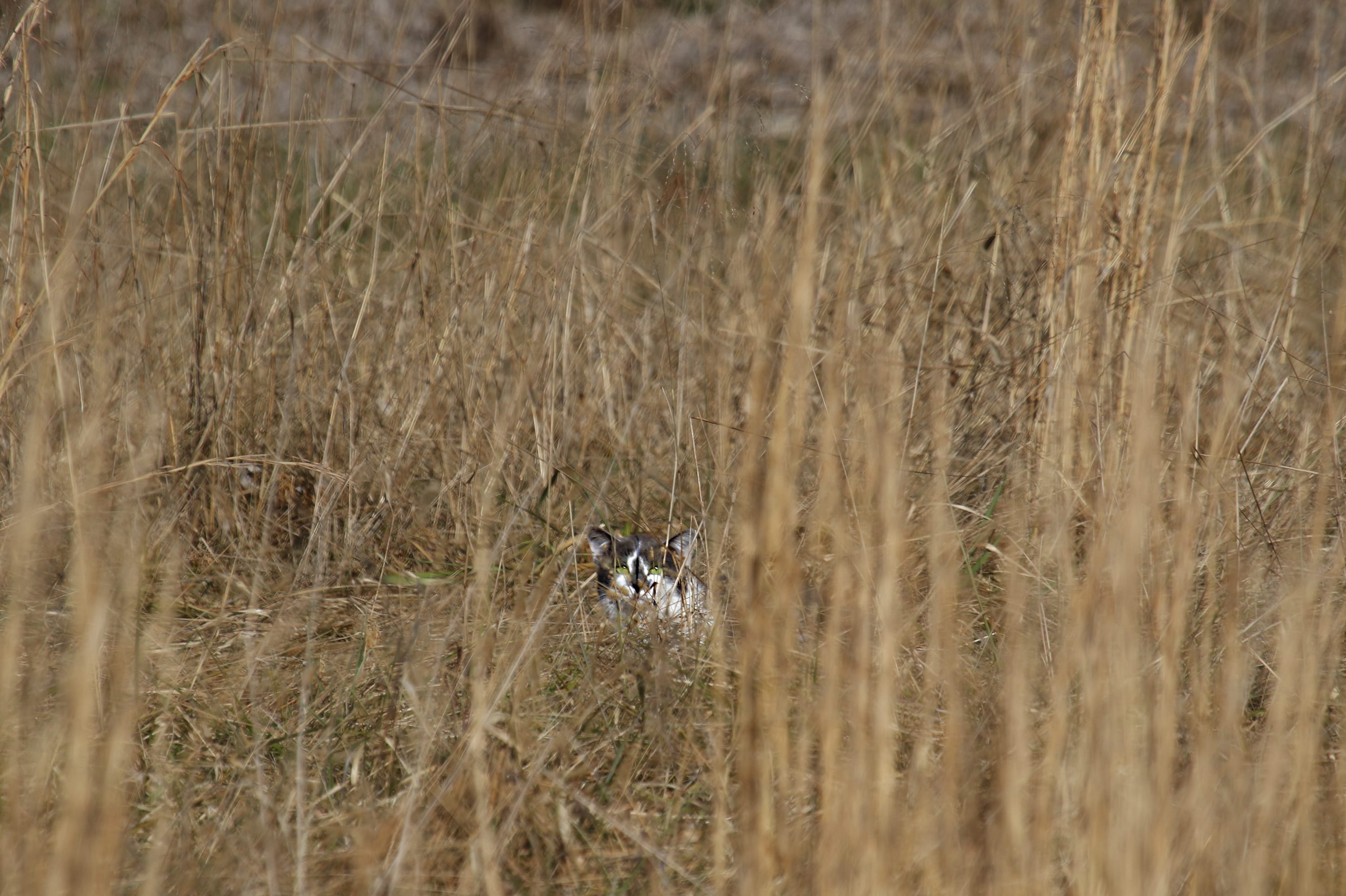
A feral cat hides in a field west of Harrisonburg.
“I think there were over 20 cats here at one time. Now there are just eight. They are about four to five years old and they all have names,” the woman at Hillandale Park says, looking from one to the other as if taking attendance. “I want people to know that they are well taken care of.”
Each of the cats is eartipped, a telltale sign that, at some point, they were trapped, sterilized and released again. It’s both common practice and an ideological wedge issue in the area’s animal welfare scene. It’s also technically illegal – although currently ignored by local animal control – and frowned upon by many bird lovers.
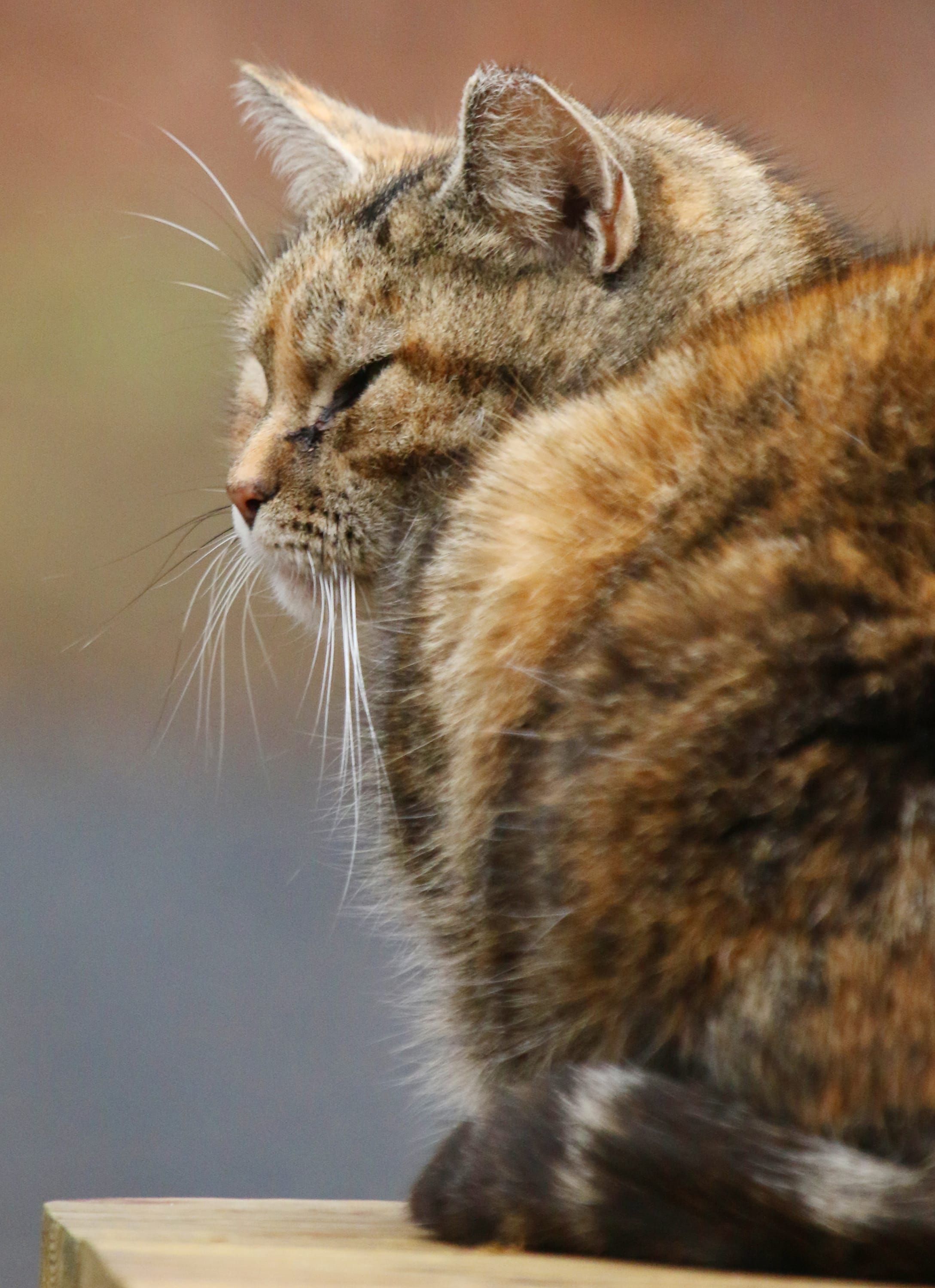
TNR the best TLC, says ASPCA
After a kitten reaches eight weeks old, it gets hard to socialize them, says Lindy Suster of Cat’s Cradle, a local cat adoption and fostering organization. They become skittish and flighty around people, reverting to their wild animal instinct to run and hide.
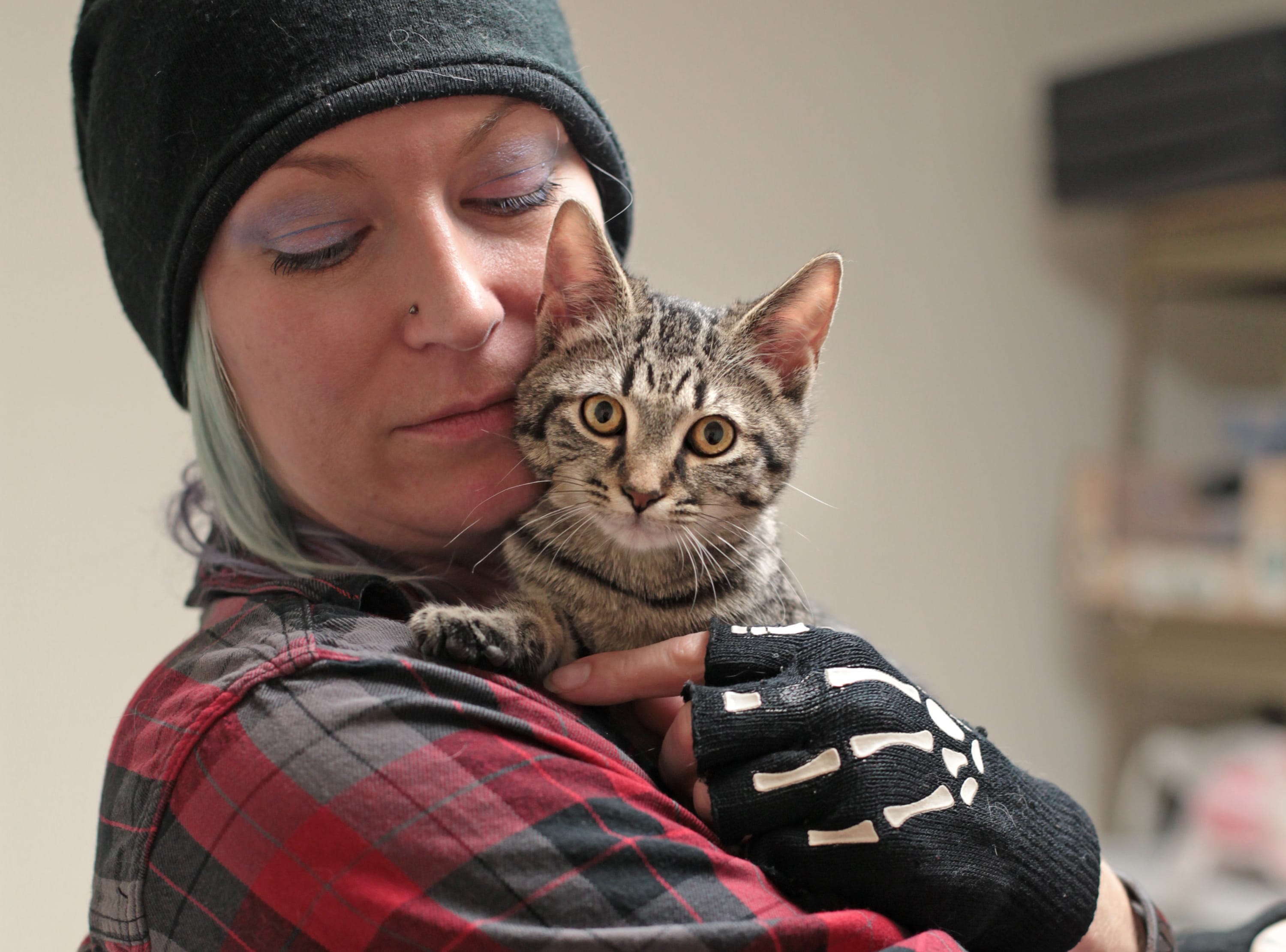
Lindy Suster, the TNR coordinator at Cat’s Cradle, holds a socialized kitten at the intake office on Huffman Street.
Because feral cats thrive outdoors, Trap-Neuter-Return – “TNR” – has become a widespread approach to controlling their populations. A TNR program involves setting box traps in areas where feral cats live, catching them, and taking them to a veterinary clinic. There, they’re sterilized and vaccinated, and then, released back where they were caught.
At the Cat’s Cradle intake office on Huffman Street, Suster, the TNR coordinator, checks on the cats she trapped that day. In a dark, eerily silent back room are four small cages covered with blankets. Lifting a corner of one of the covers, Suster reveals a cat tucked into the back of the cage, its eyes alert and cautious. “These guys never make a sound,” she says, contrasting feral cats’ behavior to the loud meowing coming from the more-socialized strays in another room.
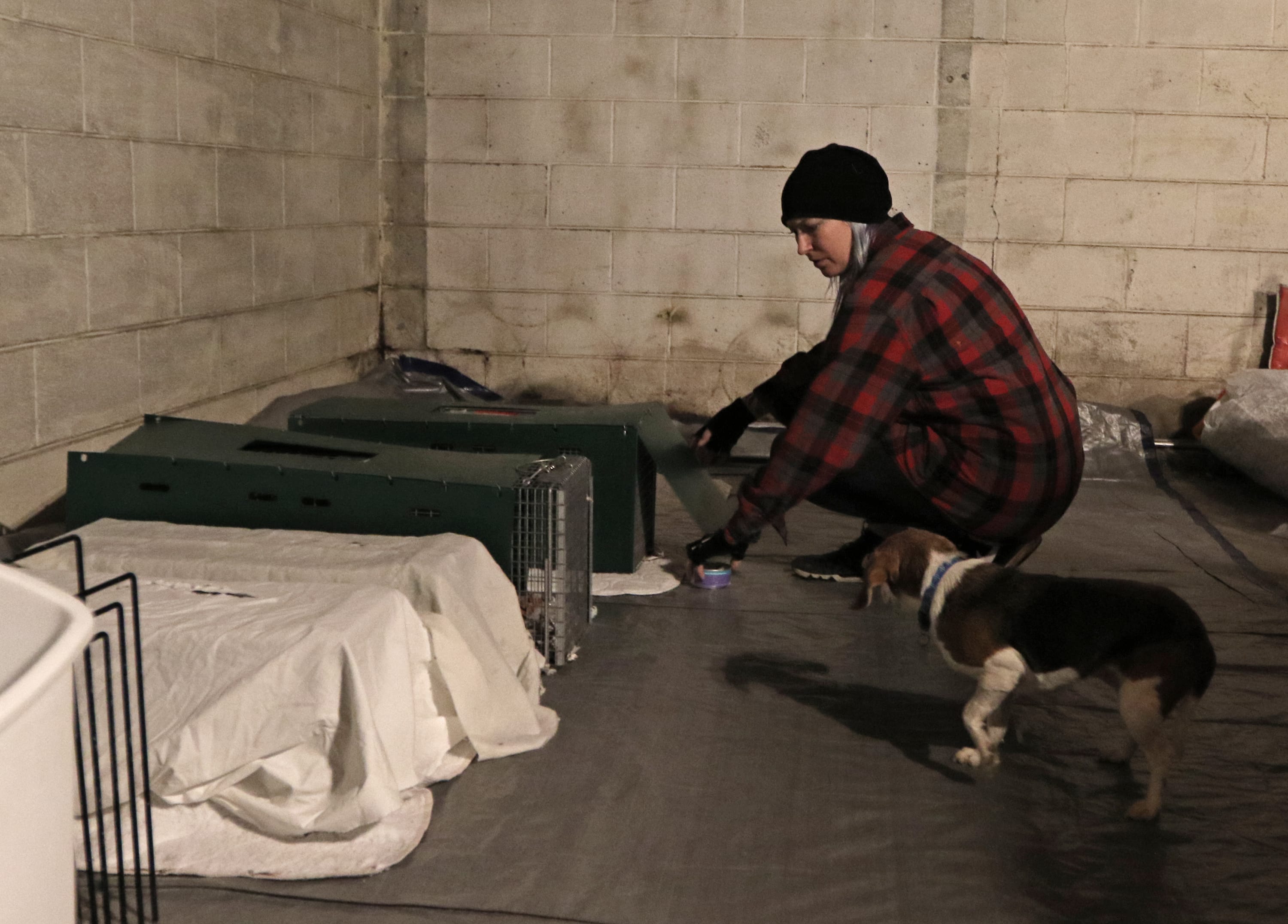
At the Cat’s Cradle intake office, Suster checks on several feral cats she trapped that day.
These cats will be transported the next day to the Anicira Veterinary Center, which partners with Cat’s Cradle to sterilize and vaccinate the feral cats. During the process, each cat gets a small tattoo on its stomach and has the tip of its left ear removed. This “eartipping” makes for easy visual confirmation that a cat has been sterilized once it’s back in the wild.
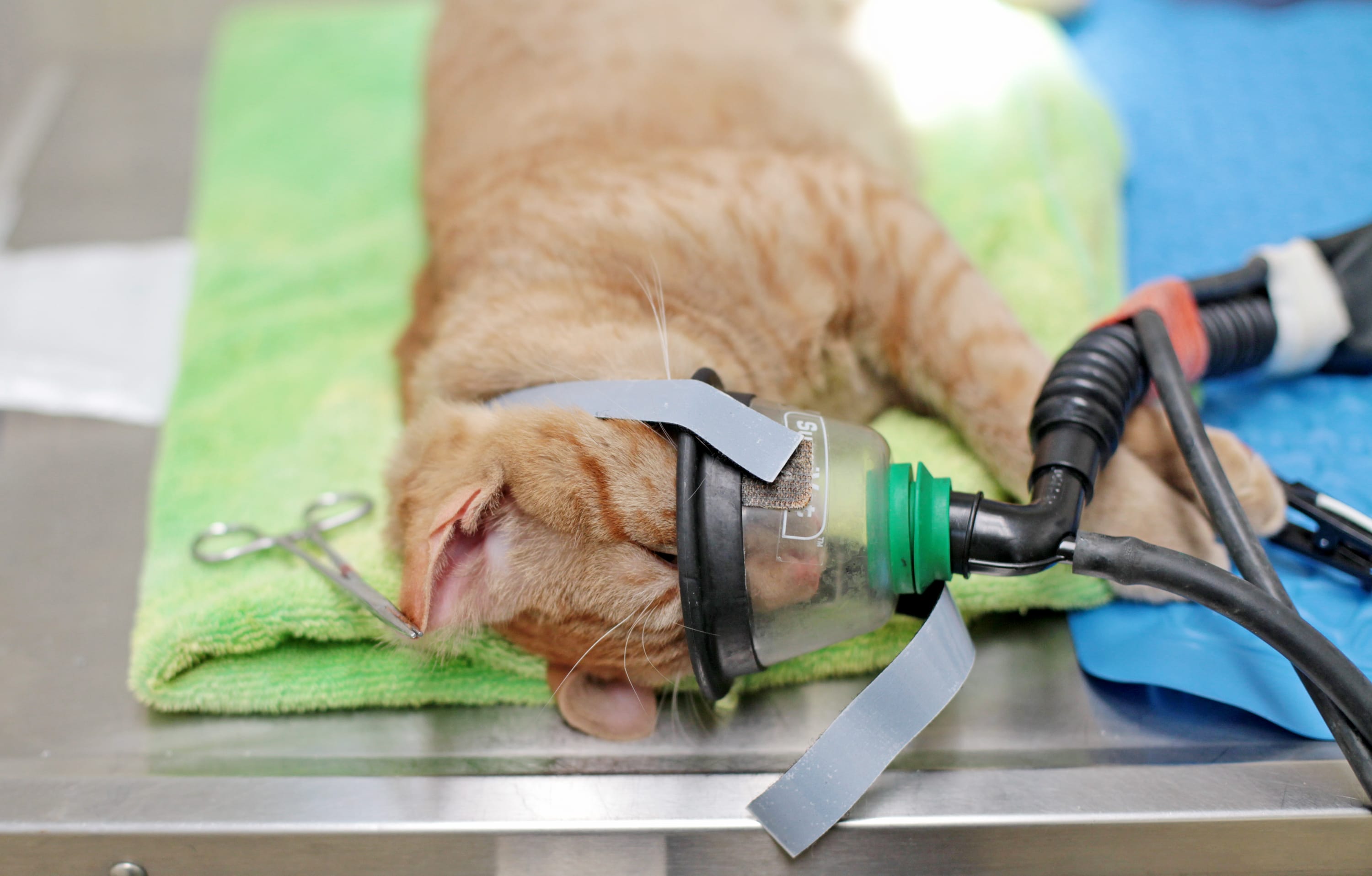
A feral cat is under anesthesia during a sterilization surgery at Anicira Veterinary Center.
When she started her job in March 2017, Suster had a waiting list of 500 people who wanted cats on their properties to be trapped and sterilized. Feral cats can form colonies around a food source – often provided by someone like the woman at Hillandale Park. Suster has seen colonies ranging from 20 to 40 cats.
“That is a big job,” she admits, noting that she has to keep returning to make sure they’ve all been captured.
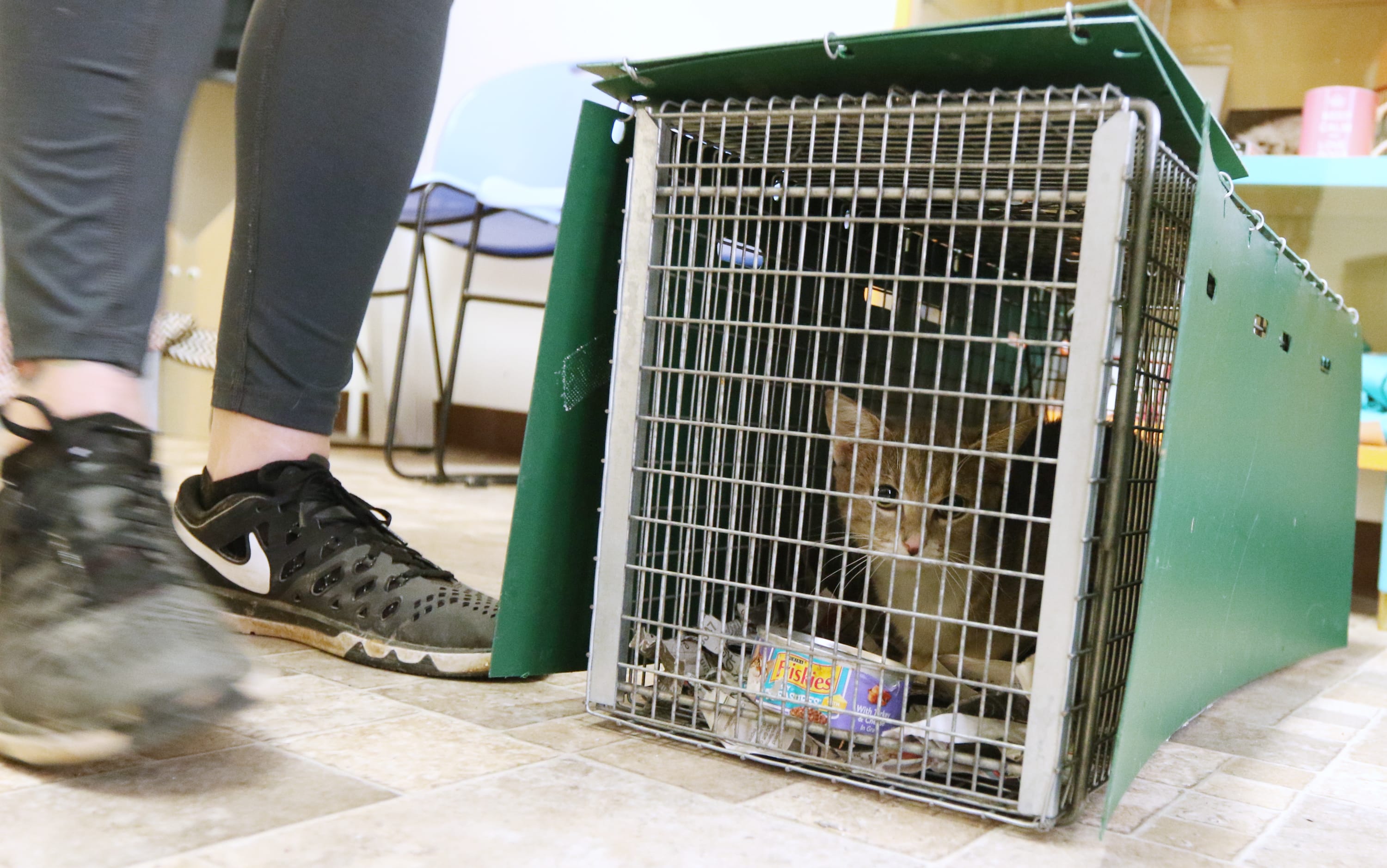
A stray cat in a trap at the Cat’s Cradle intake office on Huffman Street.
Anicira Operations Coordinator Dan Chavez says the center performed 2,471 feral sterilization surgeries last year. Of that total, 1,000 were trapped by Cat’s Cradle in Rockingham, Shenandoah and Augusta counties.
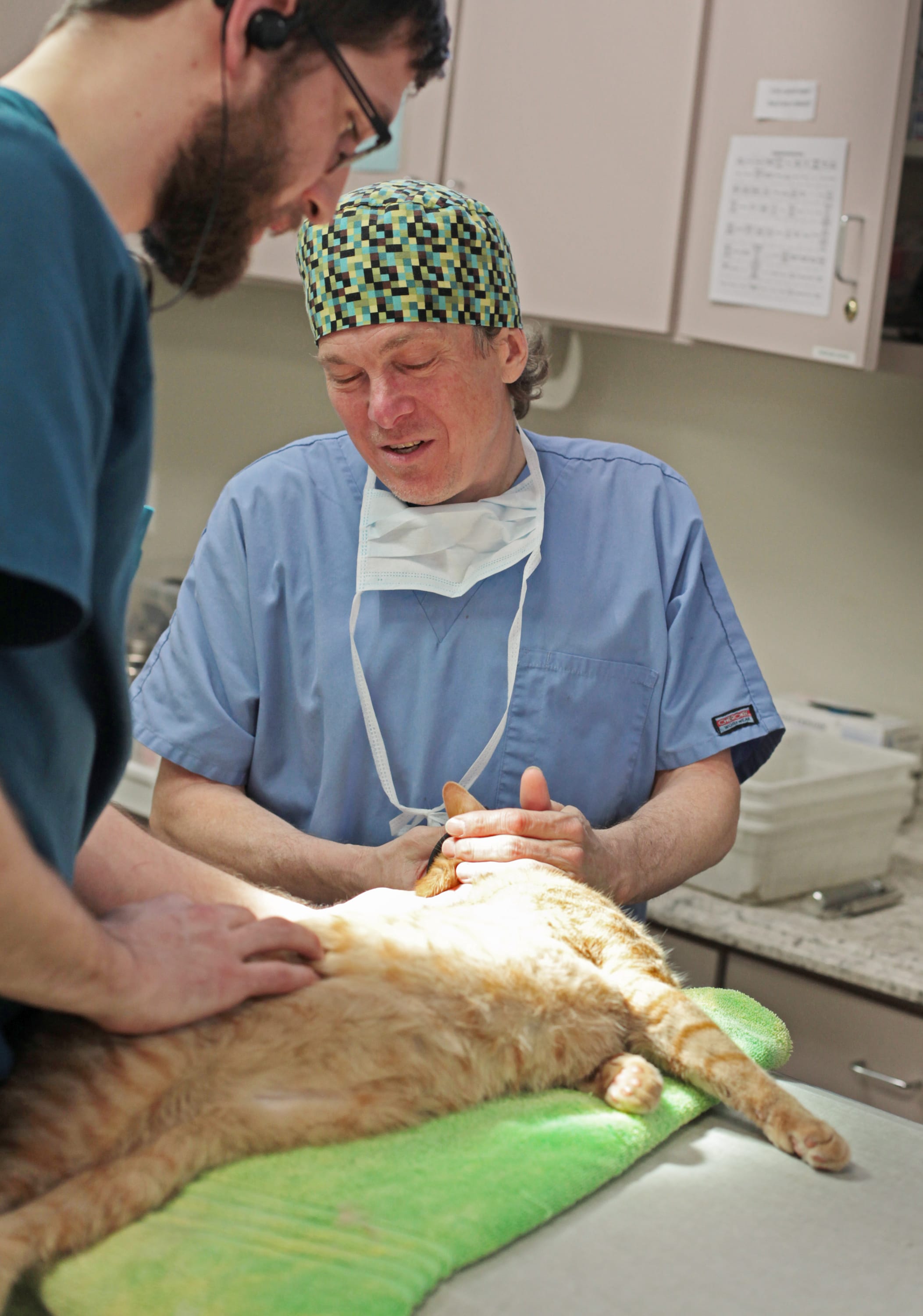
Dr. Whitney Eure prepares a feral cat for a sterilization surgery at the Anicira Veterinary Center.
TNR is supported by the American Society for the Prevention of Cruelty to Animals (ASPCA). It argues that it is the most humane way of controlling feral cat populations, as opposed to euthanasia. On its website, the group explains that a cat colony’s population stabilizes after adults are trapped and sterilized (trapped kittens can be put up for adoption). Over time, the colony will naturally die off and “nuisance behavior such as spraying, loud noise and fighting are largely eliminated and the benefit of natural rodent control is continued.”
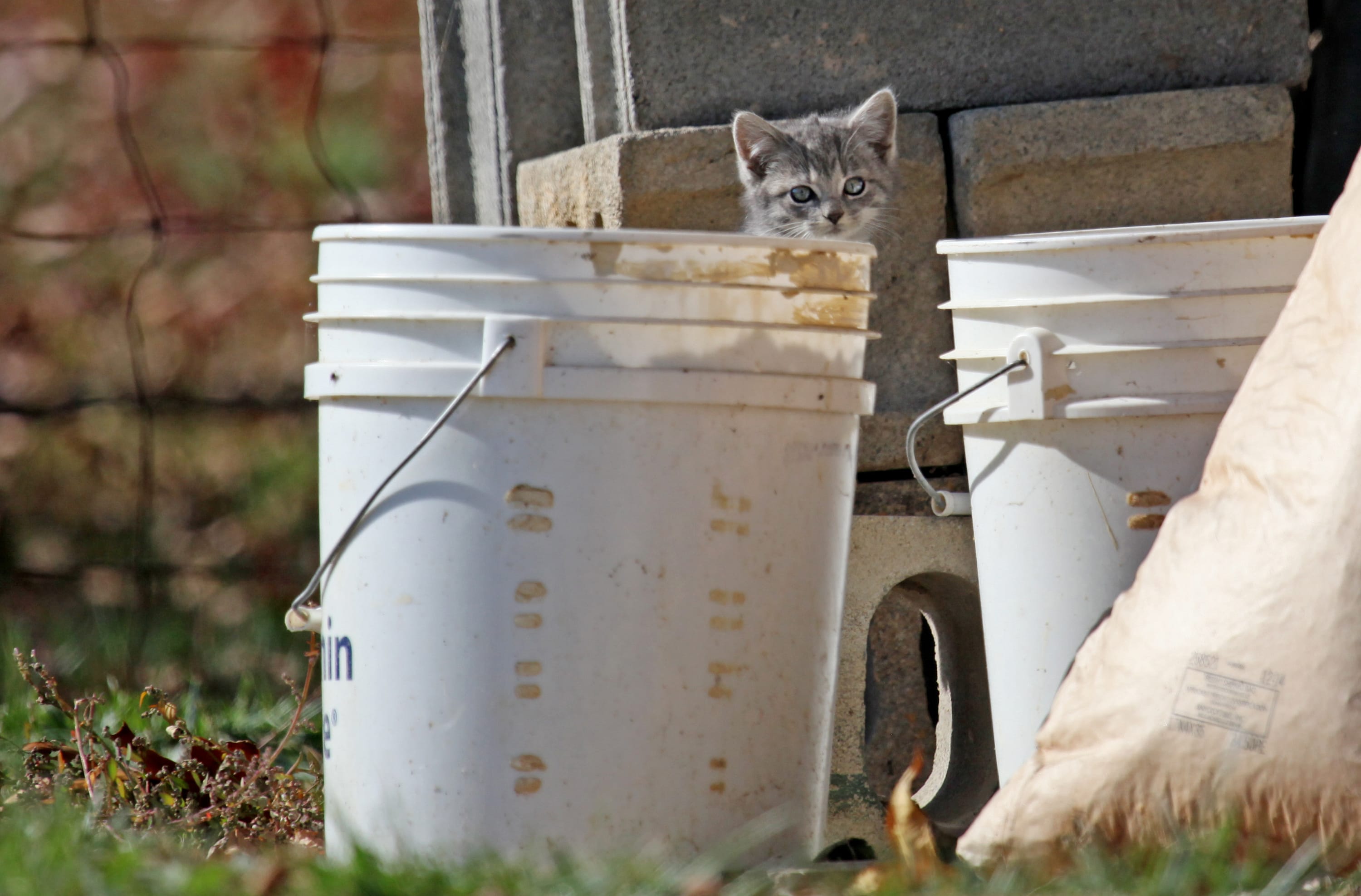
Hiding in a barn, this kitten is wary of approaching strangers. If socialized before eight weeks of age, cats usually are adoptable.
No, TNR not good TLC, says R-H SPCA
The Rockingham-Harrisonburg SPCA, however, has taken a stance against TNR. That aligns its views with People for the Ethical Treatment of Animals, or PETA. From PETA’s website: “We have seen firsthand and received countless reports that cats suffer and die gruesome deaths because they are abandoned to fend for themselves outdoors…we cannot in good conscience advocate trapping, altering, and releasing as a humane way to deal with overpopulation and homelessness.”
Those concerns extend to the cats’ ability to cope with extreme temperatures, unreliable food sources, cruelty from strangers and predation by coyotes. The R-H SPCA website also points out that sick feral cats are hard to medicate, and that it is difficult to keep them current on vaccinations.
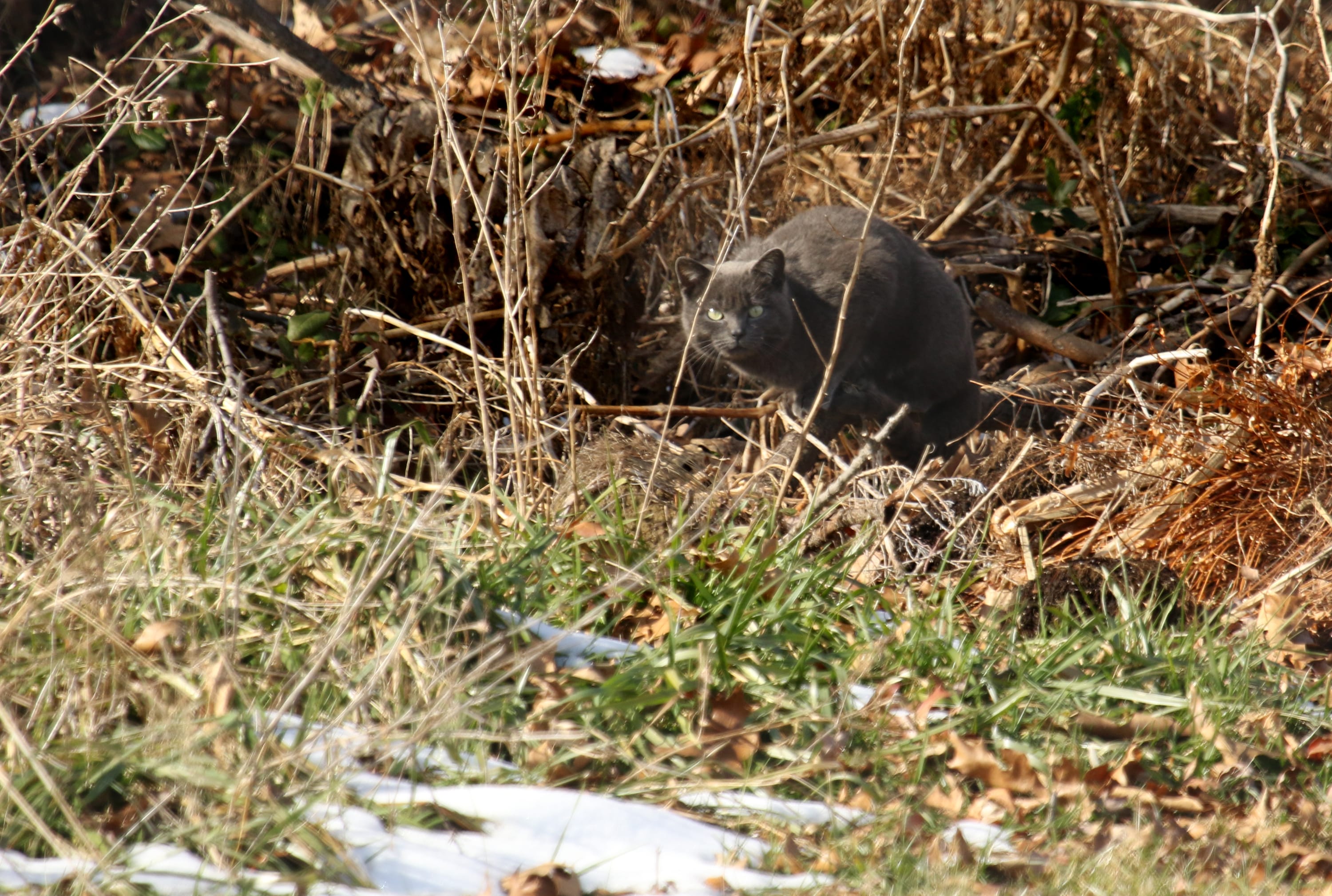
A feral cat hides in a field west of Harrisonburg.
In January, Huck Nawaz became the new director of the R-H SPCA. Still settling into the role – one that the former director held for 22 years – Nawaz would not comment on TNR but says he plans to remove statements about it from the organization’s website (as of press time, it was still up).
Serving Harrisonburg and Rockingham County, the R-H SPCA is an “open admission” shelter, defined on its website as one that “accepts all pets that arrive at their doors, regardless of age, health, color, breed, temperament, ‘adoptability,’ available resources, or the ability of the finder or owner to pay for their stay.” These shelters have to evaluate animals’ health and determine if they can be safely adopted without posing any danger to potential owners. Regardless of their background, cats are often scared when they arrive at the shelter. Because of this, Nawaz says, it can be difficult to tell how socialized they are, and being caged in an unfamiliar place with unfamiliar sounds and smells can lead to abnormal behavior.
According to Alley Cat Allies, another national organization that supports TNR, nearly all feral cats brought to open admission shelters are euthanized. Last year – prior to Nawaz’s arrival – R-H SPCA received 1,363 cats, of which 774 were categorized as “strays” (the data do not distinguish between “stray” and “feral” cats). From that total number of cats received, 236 were adopted, 171 were transferred to other shelters and 867 were euthanized.
Nawaz previously worked in Charlotte, N.C., at a “no-kill” shelter, where animals were only euthanized as a last resort in cases of severe injury or illness. A no-kill shelter often limits intakes, and may have to turn away animals when it reaches capacity. These shelters use adoption, fostering, transfer to other shelters and TNR to keep euthanasia rates low; Most of them claim a “live release” rate of 90 percent or more.

Danielle Geisert holds a four-month-old cat that she will be fostering for a week until it can be transported to another shelter. The R-H SPCA works with other out-of-state shelters that have available space for adoptable cats and dogs. Geisert says she has been fostering animals for 17 years.
TNR as civil disobedience?
The ASPCA cautions TNR advocates to be aware of city ordinances regarding abandonment. Trapping a cat to vaccinate and sterilized it could be construed as taking ownership of it, potentially turning the release phase of TNR into “abandonment.” In Harrisonburg, that’s a violation of city code section 15-2-16, which prohibits “leaving any dog, cat or other domestic or companion animal in any public place including any public right-of-way, highway, road or street or on the property of another.” In addition, Virginia law makes it a Class 1 misdemeanor to “abandon or dump any animal.”
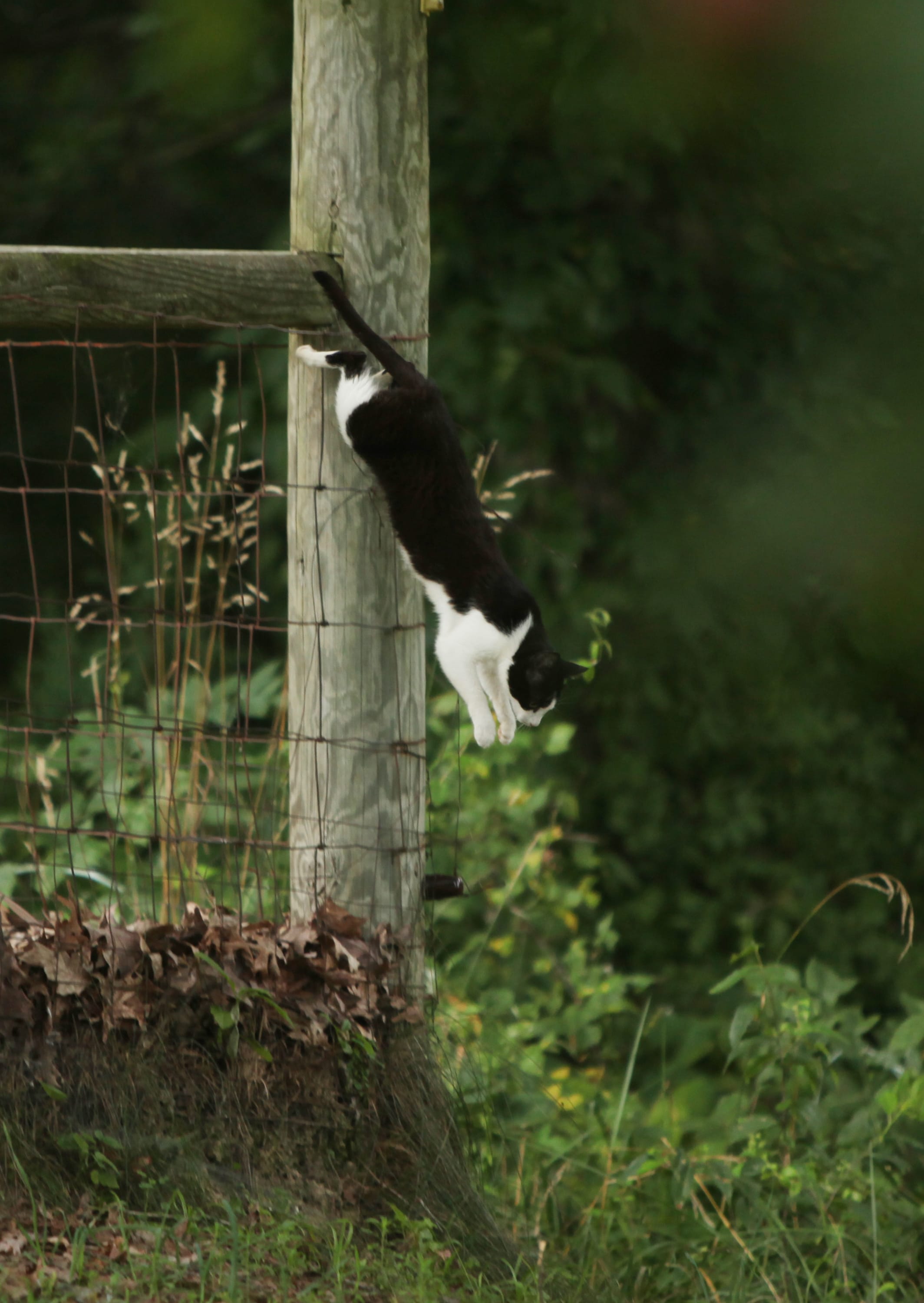
Feral cats skirt around the edges of properties, avoiding human contact.
Geoffrey Bechtel, animal control officer with the Harrisonburg Police Department, tells The Citizen that “releasing an animal of which you are an owner or custodian is a violation of code. It is not something that has been enforced up to this point, but that is not to say it will not ever be enforced.”
Some feral cats may have become feral through violation another city ordinance. Sec. 15-2-2 requires all domestic animals to be kept under the control of the owner or custodian at all times. If one trespasses on someone else’s property, then that property owner is authorized to trap the animal and turn it over to the police. Those trapped animals are then transferred to the Rockingham-Harrisonburg SPCA.
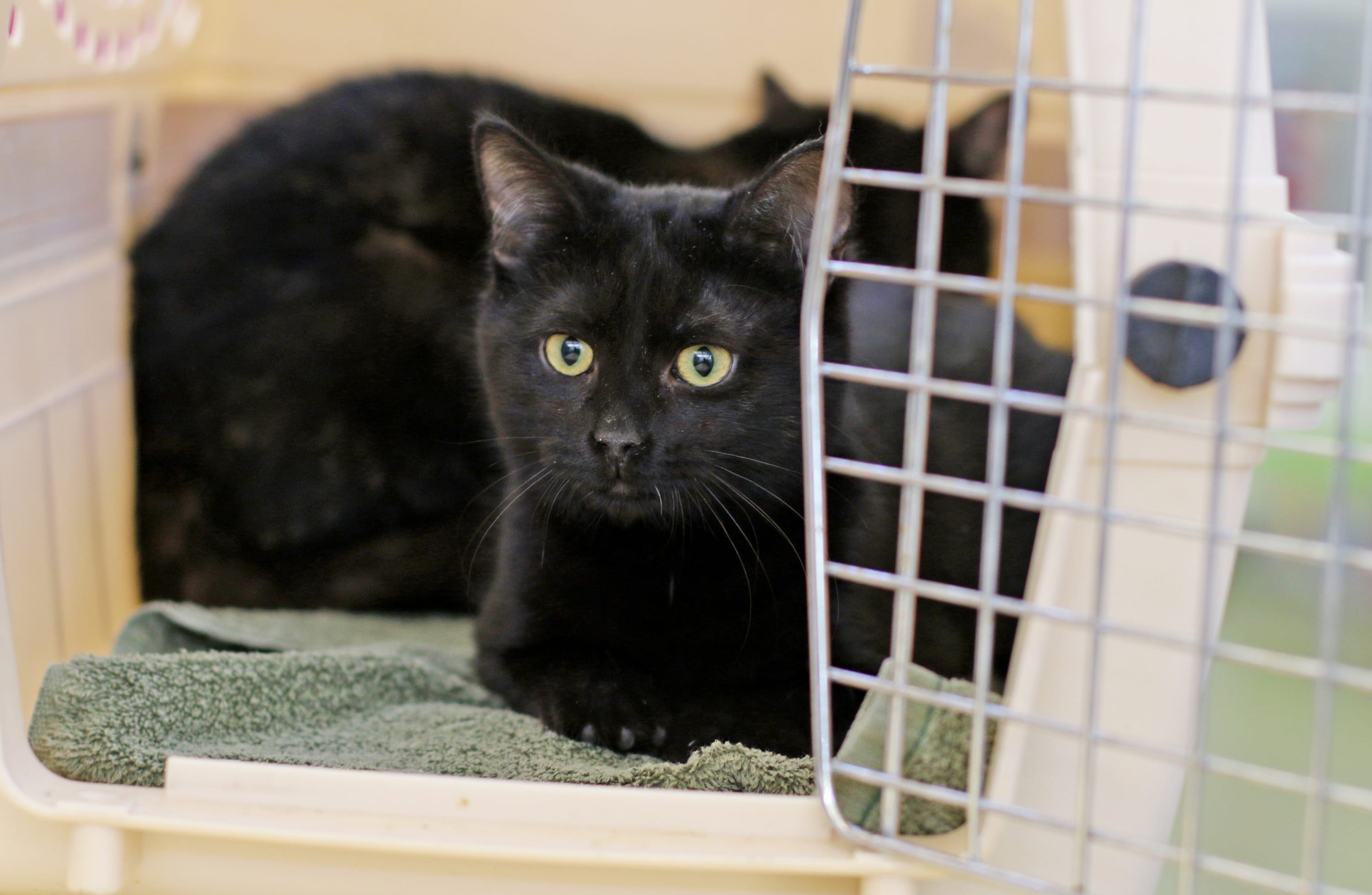
A four-month-old young cat waits to be picked up at the R-H SPCA by a foster caretaker for a week until it can be transported to another shelter.
TNR a bummer for birds
Another argument made against feral cats – and outdoor cats in general – is their predation on small mammals and birds. A 2013 study concluded that cats kill several billion birds in the U.S. each year, leading the American Bird Conservancy to identify them as the biggest single human-caused threat to bird life and criticize TNR.
Local research backs that concern up. In 2016, the Wildlife Center of Virginia in Waynesboro published the results of an 11-year study showing that “domestic cat attacks are one of the most frequent and most lethal causes of animal admission” to their center. Of a total of 21,000 patient records examined, it was determined that 2,970 were admitted due to confirmed interaction with cats.
Ed Clark, the president and co-founder of the Wildlife Center, and co-author of the study, wrote, “This completely discredits the assertion that outdoor cats only kill mice and vermin; cats are killing a wide range of wildlife, including many of our most beloved songbirds and backyard species.”
The Hillandale caretaker says she’s never seen the park’s cats kill any birds or small mammals. As she waits for the cats to finish eating, squirrels hop by, unafraid of the furry predators just a few feet away. The cats pay them no mind.
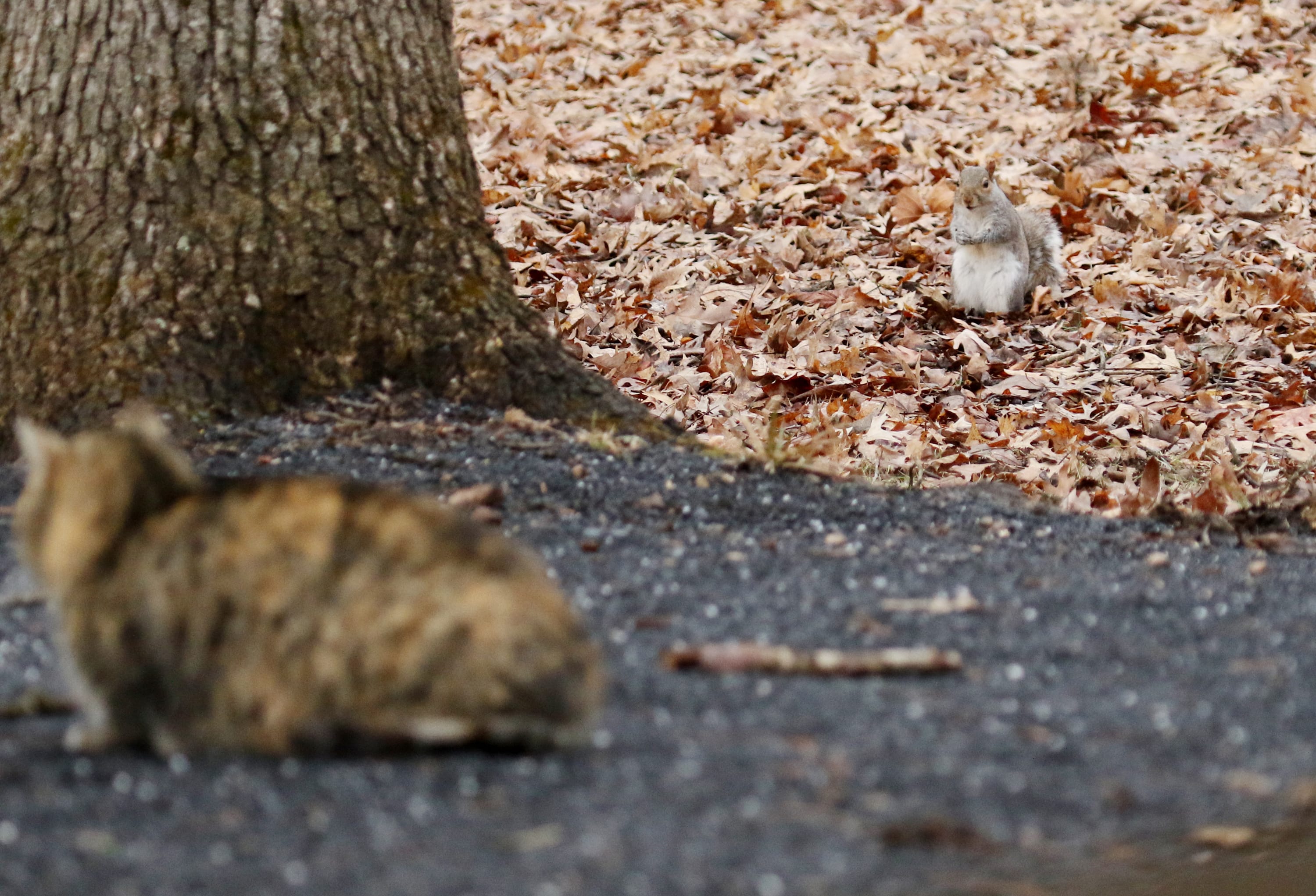
At Hillandale Park, the squirrels and cats seem equally disinterested in each other.
Living large at Hillandale
The woman wishes there was a website to identify each member of the “homeless” cat colonies currently being cared for around the city by people like her, so that people would know they aren’t lost or strays. (This woman also helps care for the “Quad cats” on JMU’s campus). Whatever lies ahead for the many lives of the feral cats in our area, both sides of the TNR debate claim they have the cats’ best interests in mind., With an estimated 600 million cats living in the world today, they’ll continue to be a fixture in our world, whether curled up on our sofas or prowling our local parks. And this particular group of black and tabby cats enjoying a meal at the Hillandale picnic shelter – feral, homeless, whatever they are – appear content with their circumstances.
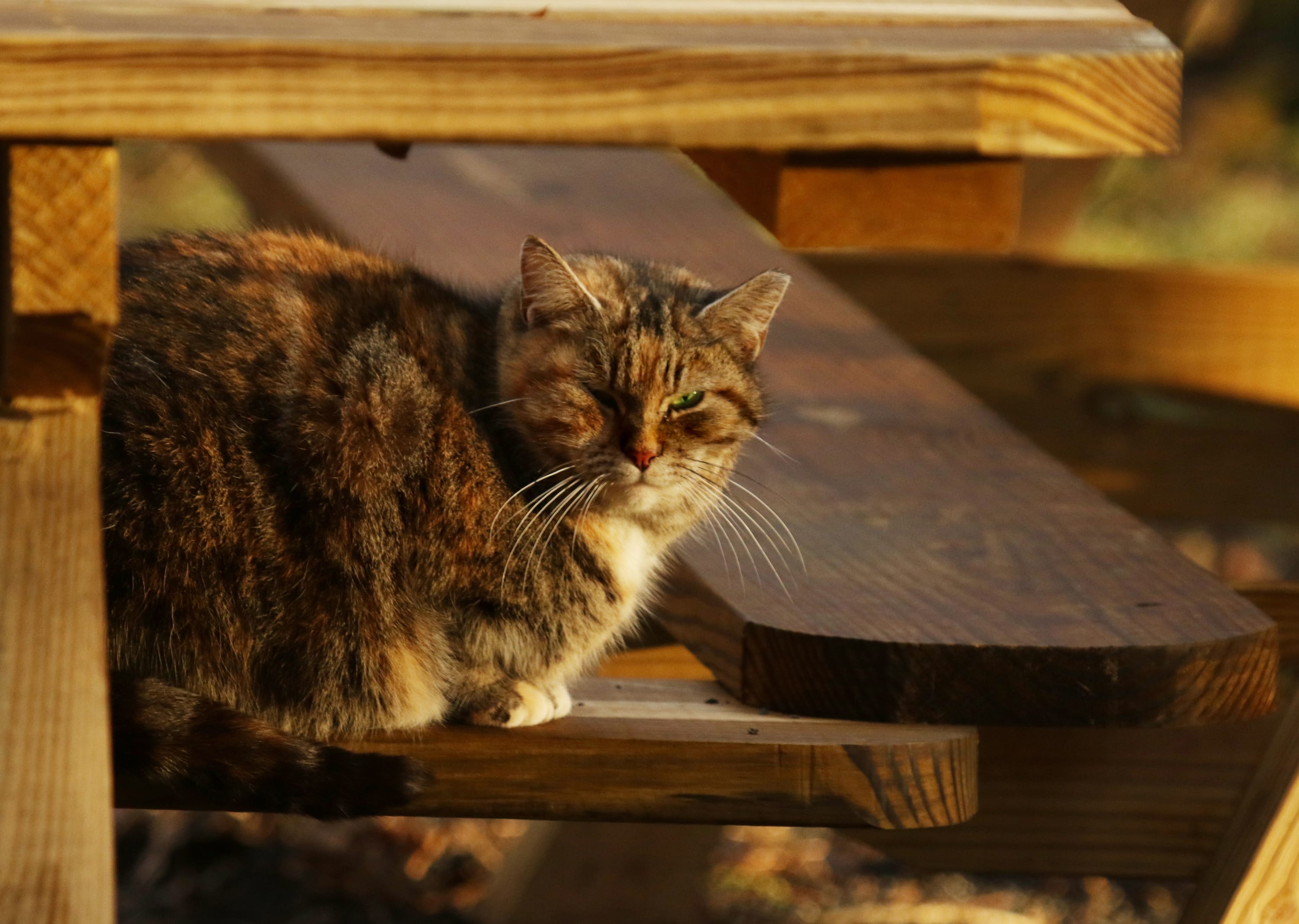
One of the Hillandale cats sunning itself on a picnic table.
Journalism is changing, and that’s why The Citizen is here. We’re independent. We’re local. We pay our contributors. and the money you give goes directly to the reporting. No overhead. No printing costs. Just facts, stories and context. Thanks for your support.












